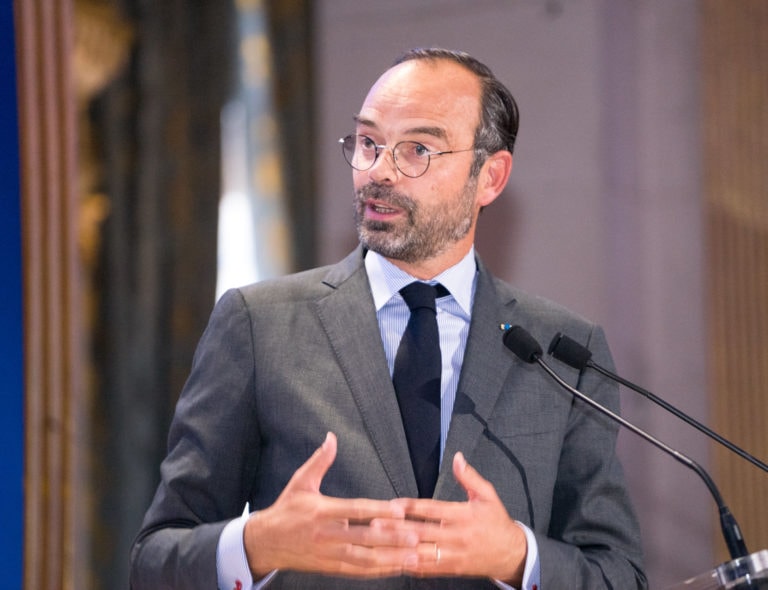France Establishes Pension Reforms
On Feb. 29, 2020, President of the French Republic Emmanuel Macron’s pension reform legislation was passed in parliament. By enacting article 49 paragraph 3 of the French constitution, Prime Minister Édouard Philippe has bypassed the routine voting process. In response, parliament enacted their right to file a motion of censorship, and if the motion receives enough votes then the Council of Ministers, including the Prime Minister Philippe, will be forced to resign. However as of March 3, that motion of censorship failed to receive enough votes to reach fruition. This controversial retirement reform proposes a universal system to replace the various complex systems currently in place.
Current System: Complications and Deficit
In the wake of World War II, France adopted their first federal pension plan which allowed employees to take advantage of social security, negotiate individual plans from private employers, or utilize a mixture of both.
This system has not changed since the 1940s. The result is that today, there are a whopping 42 different special pension plans in France. There are different schemes for the private sector, public service, for those who are employed or self-employed, and a variety of special regimes – for sailors, clerics, train workers, film makers, bankers, et cetera.
For example, a doctor would benefit from the National Retirement Fund for Liberal Professions, meanwhile a farmer would take from The Social Mutual Agricultural Fund, and a teacher would use the Civil Service Pension Plan; each regime has its own benefits and stipulations. All these plans are more or less generous, in some cases permitting workers to retire 10 years earlier than workers under other plans.
Additionally, President Macron argues that the current system is no longer financially feasible. According to the Orientation Council for Pensions (COR), the French pension system was in deficit by € 2.9 billion in 2018, or about 0.1% of gross domestic product (GDP). This deficit has decreased since 2010, when it had reached 0.7% of GDP. The COR also estimates that the current system’s deficit could reach between € 7.9 billion and € 17.2 billion in 2025.
These prospects open a political debate: on the one hand, the partisans of a strict budgetary rigor consider that this deficit is not tenable and plead for a pension reform before 2025. Meanwhile unions disagree, insisting that introducing a universal system will mean millions of workers will be forced to continue working past the legal retirement age and will receive an unsatisfactory pension.
Announcement of a Pension Reform
The vast disparity between benefits has evoked outcry since the current system’s inception. In both 1953 and 1995, the government tried to standardize pension plans, but were halted by the public’s overwhelming disapproval.
We must put an end to the suspicion that some would be treated better than others, because this suspicion is a poison that undermines solidarity.
— Agnès Buzyn
In March 2019, France’s Minister of Health, Agnès Buzyn promoted a pension reform, saying, “We must put an end to the suspicion that some would be treated better than others, because this suspicion is a poison that undermines solidarity.”
Finally, the Prime Minister Édouard Philippe presented a plan to once and for all simplify the pension system by combining all 42 pension funds into one single plan.
The French Republic justifies the creation of a universal pension plan, stating: “Built on the logic of professional statuses which no longer have the relevance they had in 1945, our pension system today consists of 42 plans. Multiplicity of rules – and exceptions, complexity of calculations when careers are hit, or when we combine several statuses (employee, self-employed, public official …), our system is too complex, generating injustice and penalizing professional mobility.”

Transitioning to a Point-Based System
Current pensions are made up of at least a basic pension and a supplementary pension. Basic pensions are calculated by averaging the annual salary earned during an employee’s twenty-five highest earning career years, or their last six months in public service. That number would then be multiplied by a liquidation rate which depends on the number of trimesters worked. Supplementary pensions are based on point-systems and added to basic pensions.
In Édouard Philippe’s proposed reform, pensions will not be calculated based on the twenty-five best years, but instead will be calculated by a point-based system. In brief, each worker will have a virtual account in which all their contributions will be deposited. This virtual capital will then be converted into points. Points can be earned through validated hours of work, and the value of each point will be the same for every French person (for example, 1 point = 1.25 euro). Points are multiplied by a coefficient which takes age of retirement and life expectancy into account.
Points will also increase by 5% for each child reared and an additional 2% for families of 3 or more children. These additional points will be automatically assigned to the mother, as a form of reparation for career impairment caused by child upbringing However, the mother can decide to split the increase, or re-allocate it completely to a co-parent.
Critics complain that the point system removes the retiree’s visibility on the foreseeable replacement rate which will be applied to them. Under today’s pension system, a retiree knows he or she will receive a certain percentage of their earnings. However, the point system is unpredictable because their pension is no longer expressed in a fixed rate related to a reference income, but to a point service value defined, guaranteeing the overall financial equilibrium of the system.
https://twitter.com/Amreenrajavi/status/1218603648273375232
Attempt to Adjust Retirement Age
Perhaps the most disputed aspect of the new pension plan proposal is the introduction of a “pivot age.”
According to the current pension plan, the legal age of retirement is 62, but to receive full benefits one must be at least 67 years old.
In the newly proposed pension plan, the retirement age rests at 62, however, retirees will receive a penalty of 5% per year if they leave the workforce before the “pivot age” of 64. Likewise, if workers indeed wait to retire until age 64, they will be rewarded with an increased retirement pension.
The point-system also correlates with retirement age: the coefficient by which a worker’s points are calculated considers the life expectancy of each generation. If each person’s pension is divided by the estimated number of expected years to live, and life expectancy is increasing, then the result of the calculation would entail a lower monthly remuneration and would therefore gradually encourage workers to delay retirement.
The proposed plan to penalize or reward retirees based on age has faced substantial backlash from members of the public who see the reform as a devious and convoluted attempt to raise the retirement age.
In January, critics of the reform triumphed when Prime Minister Philippe announced that the government would temporarily withdraw the pivot age construct, a gesture to appease the public.

From Purely Public to Semi-Private
The current retirement plan is a pay-as-you-go system, meaning that today’s workers pay today’s retirees. However, the retirement reform intends to draw retirement checks differently, proposing a model based on three components: the basic point-based retirement of a few hundred euros, retirement savings negotiated in companies that can afford to participate in investing, and funded pension insurance for the wealthy who entrust their savings to the Stock Exchange.
Critics denounce diverting from the pay-as-you-go system, which is perceived to be the safest way to pay retirees. Wages account for the largest share of France’s gross domestic product, so there is plenty of money to excavate. Entrusting insurance companies and company pensions is criticized for being risky, since financial intermediaries and shareholders take commissions, and could make dicey stock market speculations.
According to this anti-reform union, “The risk is therefore to lose all or part of the savings of a lifetime. During the crash of 1987, the crisis of 1993, the bursting of the internet bubble in 2000 or the subprime crisis in 2007-2008, all those whose main income was based on pension funds had to put in search of a job to provide for the most basic of their needs: food and shelter.”
Minimum Amount Guaranteed
A minimum retirement check of the 85% minimum wage will also be allotted to all retirees, a particularly beneficial increase for farmers and women. Currently, the minimum contribution is set at 81% of the minimum wage for employees and 75% for farmers.
Related Articles: Is Brexit a Defeat for Europe? | Coronavirus Outbreak: Political Risks
Workers Born After 1975 Are Affected
“For those who are already in the workforce, we have chosen not to change anything for those who are now less than 17 years from their retirement. For the general scheme, this will affect people born before 1975, who will be over 50 years old in 2025”, declared the Prime Minister.
Workers born after 1975 will begin integrating the new system in 2025. Thus, people born after 1975 will have two pensions: one calculated using the current scheme, and one universal fund that they begin contributing to in 2025.
The first generation to be fully integrated into the reformed scheme will be people who were born in 2004 and onward. Therefore, the pension reform will begin full implementation for those who are entering the labor market in 2022.
Public Reaction to Pension Reform
The announcement of the pension reform has sparked intense debate throughout the country, generating fiery disapproval of President Emmanuel Macron. According to a poll taken at the beginning of 2020, public approval for President Macron’s pension plan is remarkably low: 61% of those polled believe that President Macron should consider demands of protesters and withdraw the reform entirely.
Progressive politician Jean Luc Mélenchon claimed the reform was, “adding confusion to previous confusion.” Meanwhile, conservative politician Marine Le Pen denounced the plan as a “manipulation by the government.”
As a self-described centrist, one of the President’s biggest ambitions is to rein-in public spending and bring down France’s deficit by cutting corporate and wealth taxation and reducing spending on government jobs. This unpopular stance has earned him the nickname “président des riches”.
At the time of the pension reforms proposal by Prime Minister Phillippe, French citizens were already taking their grievances to the streets in yellow vest protests, revolting against President Macron’s 2018 decision to raise fuel taxes and the ever-rising cost of living.
I started in 2001 with a contract that allowed me to leave at 50. But like everyone else, I got the reforms which pushed back my early retirement age to 52-and-a-half and then 57-and-a-half for full pension. Now they want to make us work even longer.
— Toulouse Train Conductor
According to yellow vest protesters, Emmanuel Macron’s reforms were falling hardest on the shoulders of the working and middle classes, meanwhile unfairly favoring elites. As a result, the announcement of a controversial retirement reform only aroused further distrust and indignation.
December protests over pension reforms paralyzed the entire country, with over 800,000 participants across over 100 cities. Among the protesters were workers from a variety of professions such as teachers, transport workers, hospital staff, and more.
At a Toulouse demonstration, a train driver explains his discontent with the reforms, “I started in 2001 with a contract that allowed me to leave at 50. But like everyone else, I got the reforms which pushed back my early retirement age to 52-and-a-half and then 57-and-a-half for full pension. Now they want to make us work even longer.”
Key Dates
- January 24, 2020 – Bill was presented before the Council of Ministers
- February 17, 2020 – Parliamentary debate, first reading in the national assembly
- February 29, 2020 – Bill was passed through parliament without voting process
- End of 2020 – Final adoption of law in Parliament
- 2022 – Entry into the universal system of all contributors born from 2004
- 2025 – Entry into the universal system of all insured persons born from 1975
Editors Note: The opinions expressed here by Impakter.com columnists are their own, not those of Impakter.com – In the Featured Photo: Gilets Jaunes protesting at Montmartre in Paris – Photo Credit: Olivier Ortelpa















